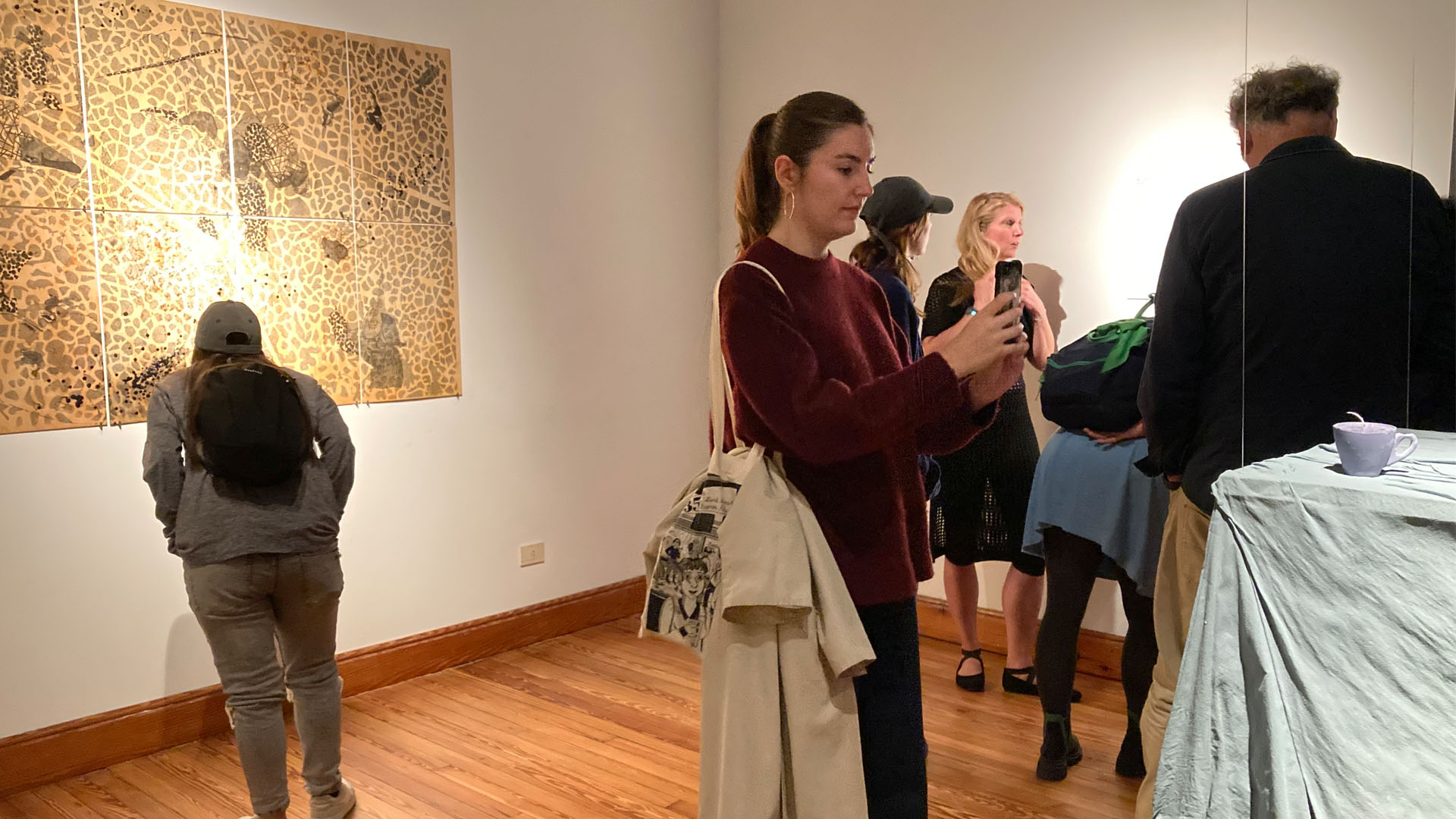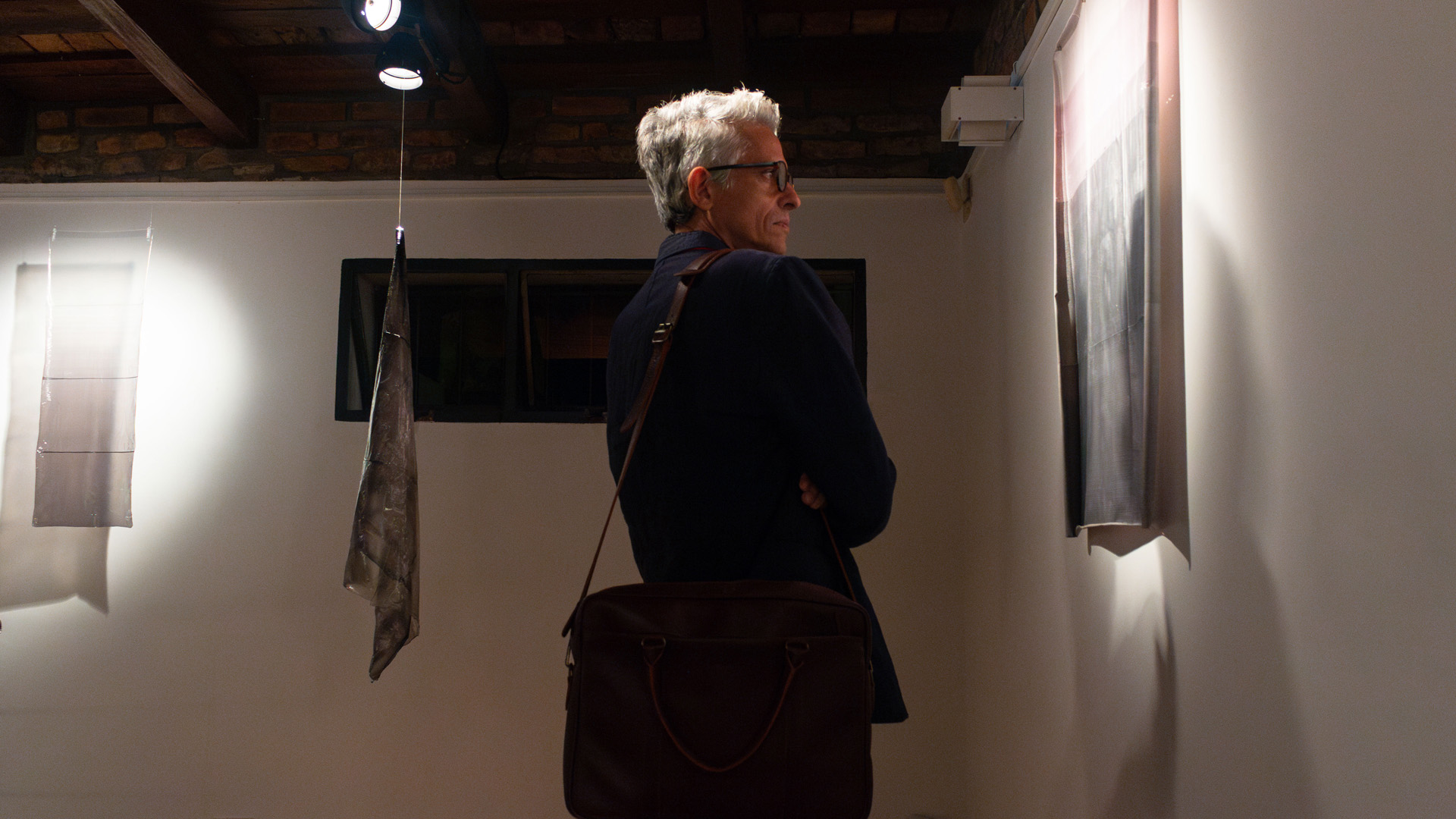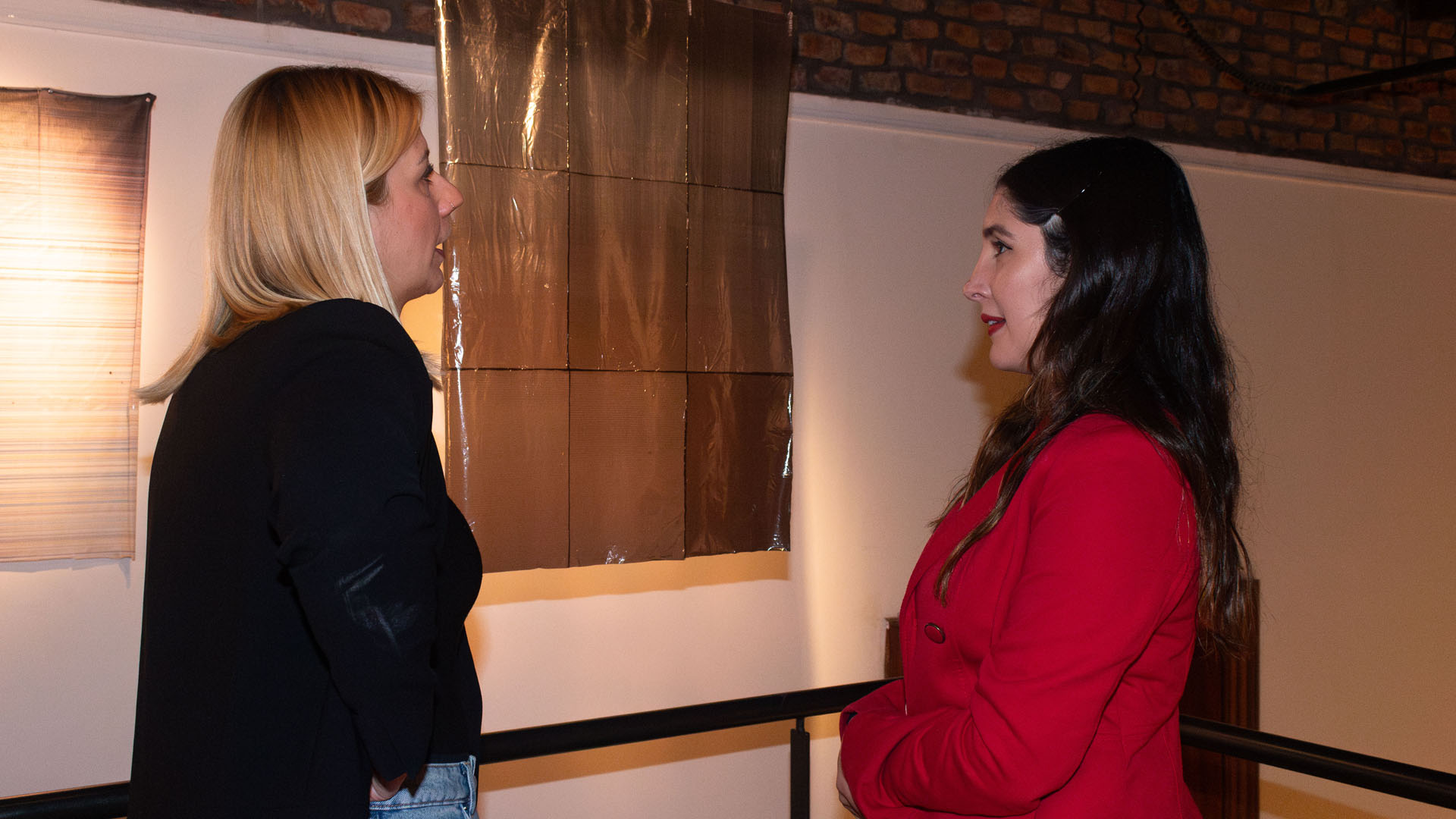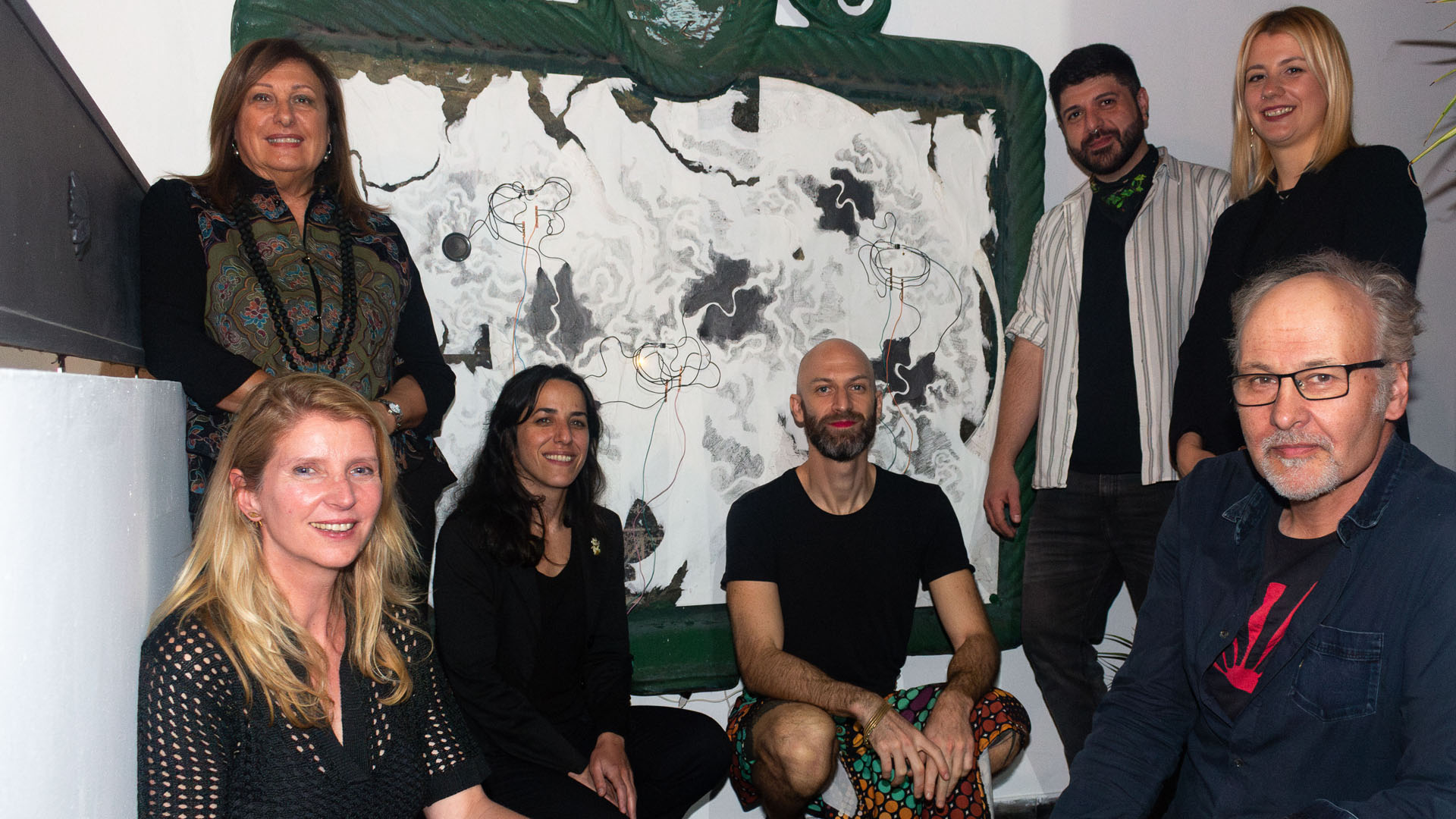Artists
Poland
Alicja Panasiewicz
My Personal Cloud
21.04.25 16.05.25
Alicja Panasiewicz is a Polish visual artist who came to ´ace together with her collaborator, Adam Panasiewicz, to build an installation in the Políglota Room of the ´ace studio. Alicja studied at the Academy of Fine Arts in Cracow, Poland and since 1996 she has been working at the Faculty of Art at the Pedagogical University of Cracow, teaching biodesign, environmental art and visual structures. As an artist, she creates light objects and installations, putting focus on the phenomenon of light in space and the aesthetic value of both that creates the viewer’s impression about them. In her artistic practice, she focuses on the phenomenon of light within space and the aesthetic value that arises from their interplay, shaping the viewer’s perception. Reality, in essence, is to her an optical illusion—much like a curtain that separates us from the true nature of the world.
During her time as a resident, Alicja roamed Buenos Aires and its corners in search of inspiration that would bring her closer to Witold Gombrowicz, a Polish writer that migrated to Argentina in the first half of the 20th century. With this inspiration in mind, and having brought her materials from Poland, she and Adam built a multi-objectual installation that was comprised of a table with hand-made candles resembling Gombrowicz’s objects, prints, and a digital video projection.
ARTIST STATEMENT
The phenomenon of natural light—quanta of energy traveling at immense speed from the Sun through the darkness of space, only to reflect off surfaces and reach the human eye—is, for physicists, a straightforward atmospheric occurrence: the penetration of light through various substances. In my work, I explore this fleeting phenomenon using electric light and transparent materials—ranging from translucent to nearly opaque. I create deceptive, immersive spaces that invite multisensory experiences of light, approaching a synesthetic perception. Light is not perceived by the eyes alone; it can be felt and sensed in other ways. I have moved away from designing defined forms, focusing instead on capturing impressions, illusions, and tactile sensations.
BIO
Alicja Panasiewicz
1972 | Kraków, Poland
Lives and works in Kraków, Poland
EDUCATION
Professor of Fine Art—Faculty of Art University of the National Education Commission, Krakow, Poland
EXHIBITIONS
2024 | Chromophilia part 2 – 6 faces. Centro Cultural Municipal Adriano Moreriro Braganca Portugal
2024 | Ethnocentrism/Spaces of Alienation. Gallery of Icelandic Print Association, Reykjavik, Iceland
2024 | Ethnocentrism–traces. L’Assaut de la meniseuerie, Saint Etienne, France
2023 | SACO Biennal. Antofagasta, Chile
2023 | Festival Svetlobna Gverilla. Ljubljana, Slowenia
RESIDENCIES & AWARDS
2025 | Belgrad Art Studio residency, Belgrad, Serbia
2024 | L’Assaut de la meniseuerie residency, Saint Etienne, France
2019 | Drawing Triennal Wrocław award, Academy of Fine Arts
2015 | Grand Prize of Triennial 1st International Digital Art Triennial
2015 | Digital Agora 2015, Szekszárd, Hungary


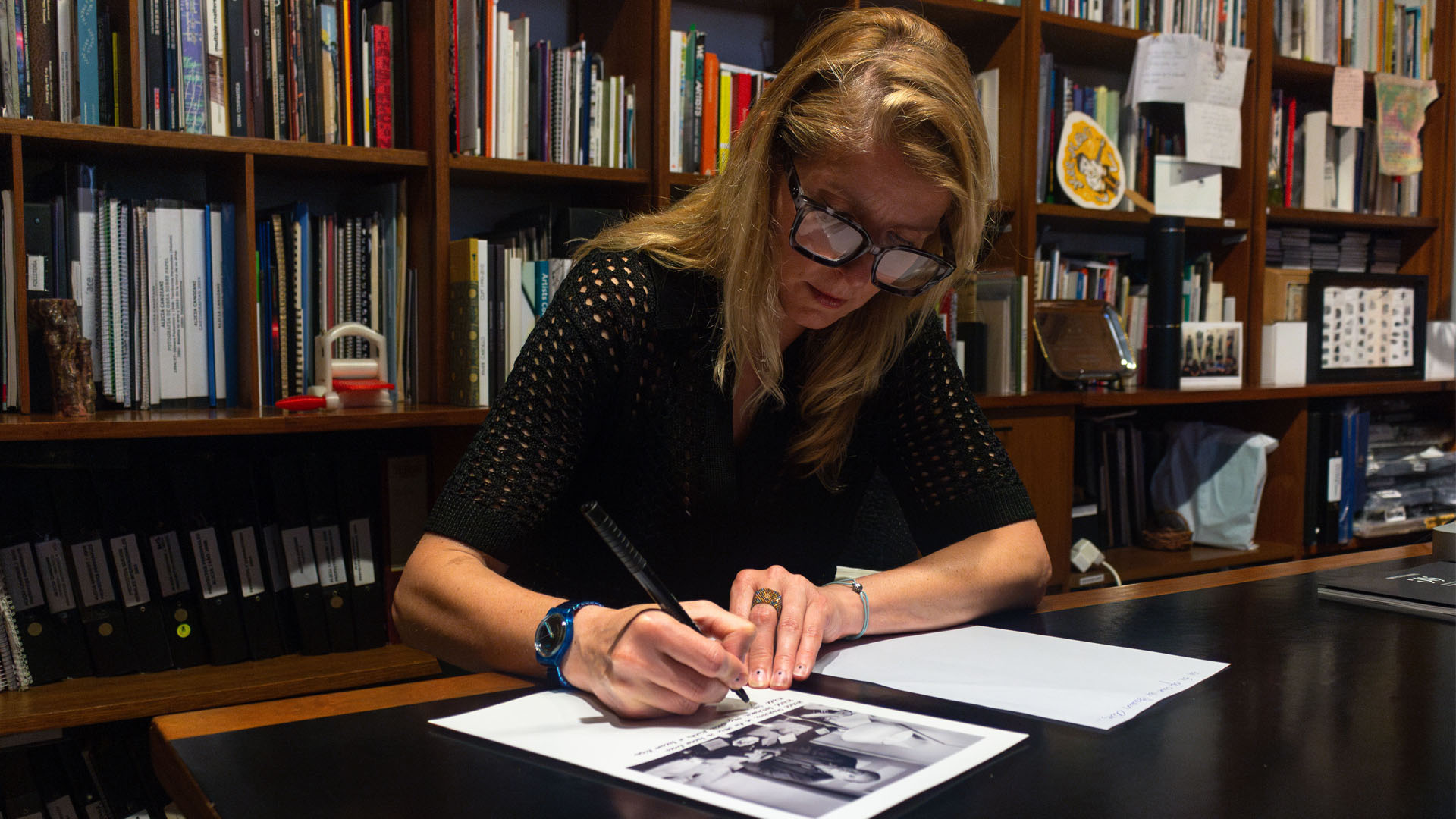

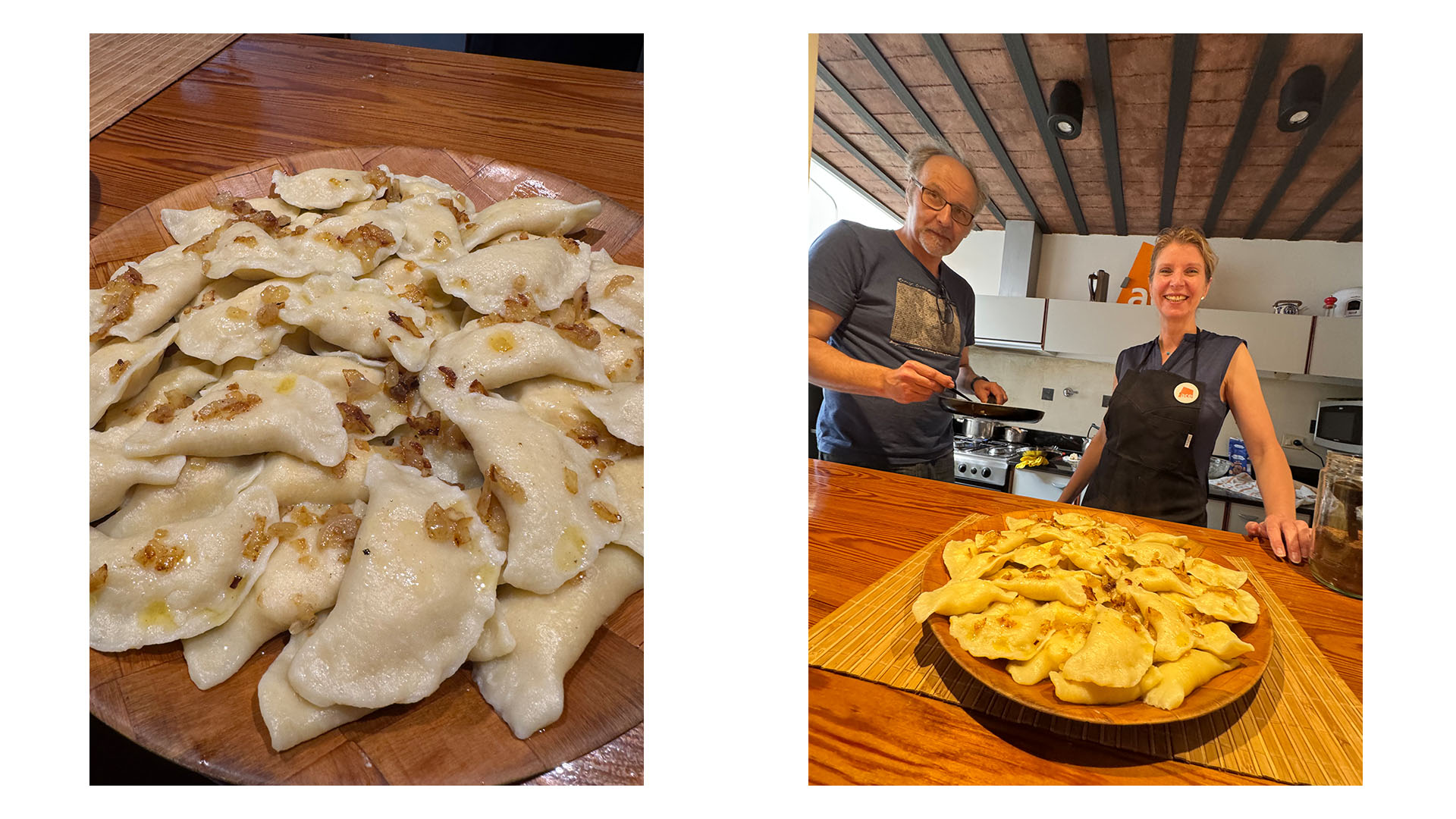
Related Activities
Exhibitions
My Personal Cloud
Alicja Panasiweicz
14.05.25 04.06.25
As a closure to the residency project that Alicja Panasiweicz came to produce in the ´ace studio in collaboration with Adam Panasiewicz, the collective duo presented an installation comprised of multiple elements in the Políglota Room.
During her residency, Alicja developed an artistic project inspired by the life and work of the Polish émigré writer Witold Gombrowicz, who arrived in Buenos Aires in 1939 and unexpectedly found himself in exile. His confrontation with a foreign reality, shaped by imagination and cultural displacement, became a starting point for Alicja’s own autoethnographic explorations. This encounter with the unknown — imagined yet real — opened a rich space for artistic reflection and creation. In her project, titled My Personal Cloud, the artist explored the idea of presence and place through olfactory compositions. By blending scents associated with her own identity and environment with those discovered locally in Buenos Aires, she created scented wax forms that, once burned, released multisensory experiences.
The work playfully investigated collision, merging, and immersion into a new context, offering a poetic metaphor for cultural dialogue and sensory memory.

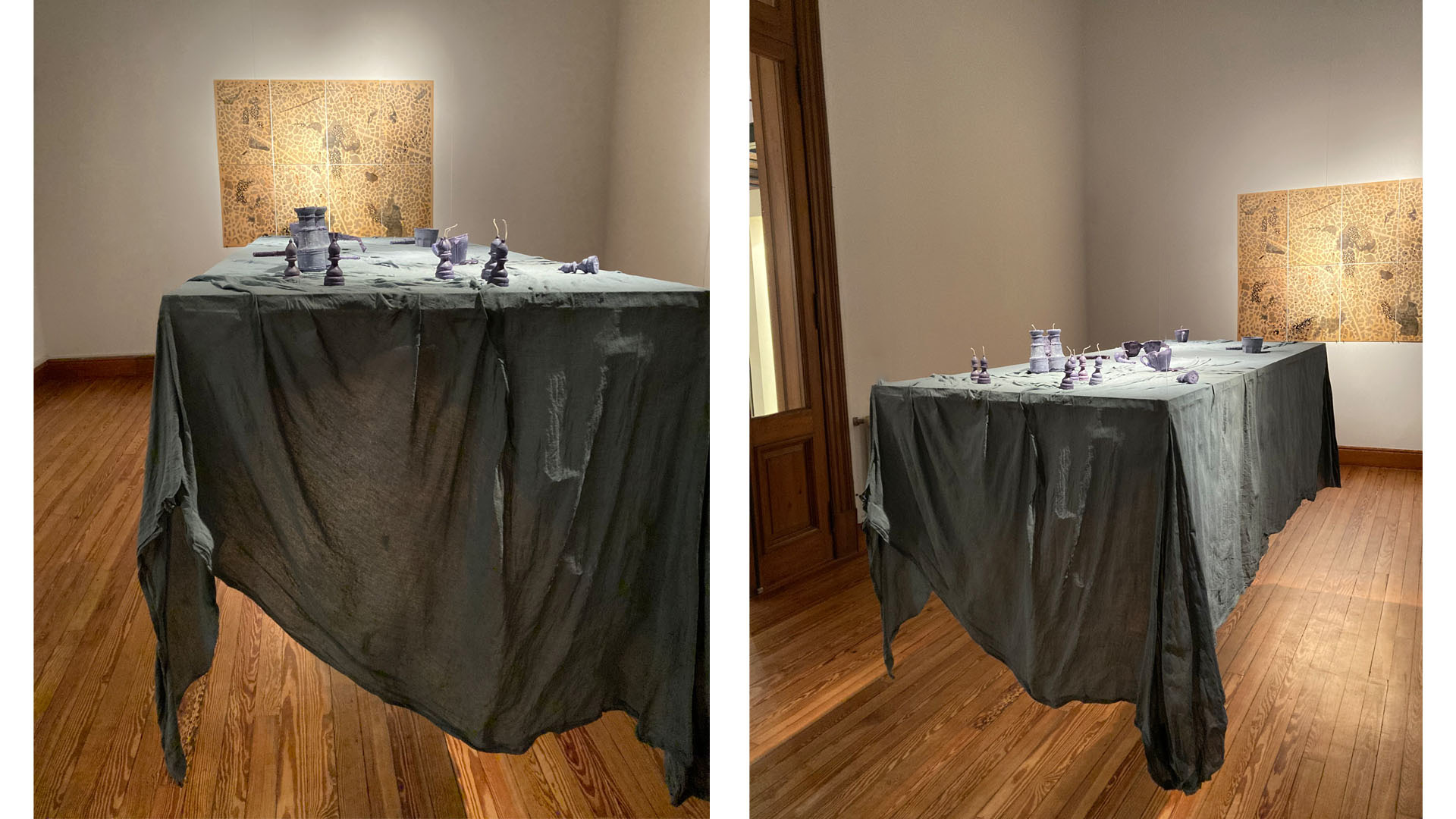
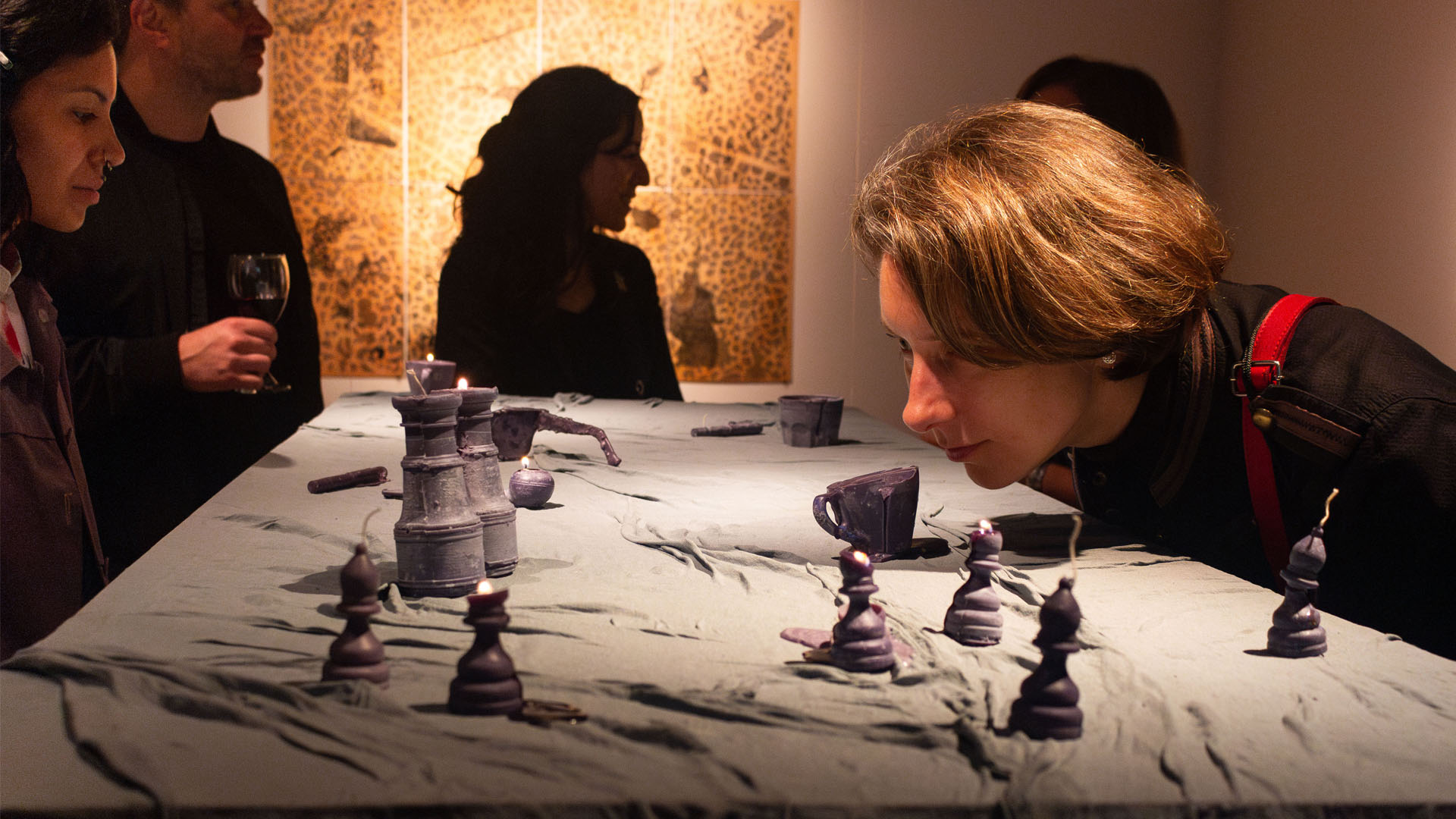

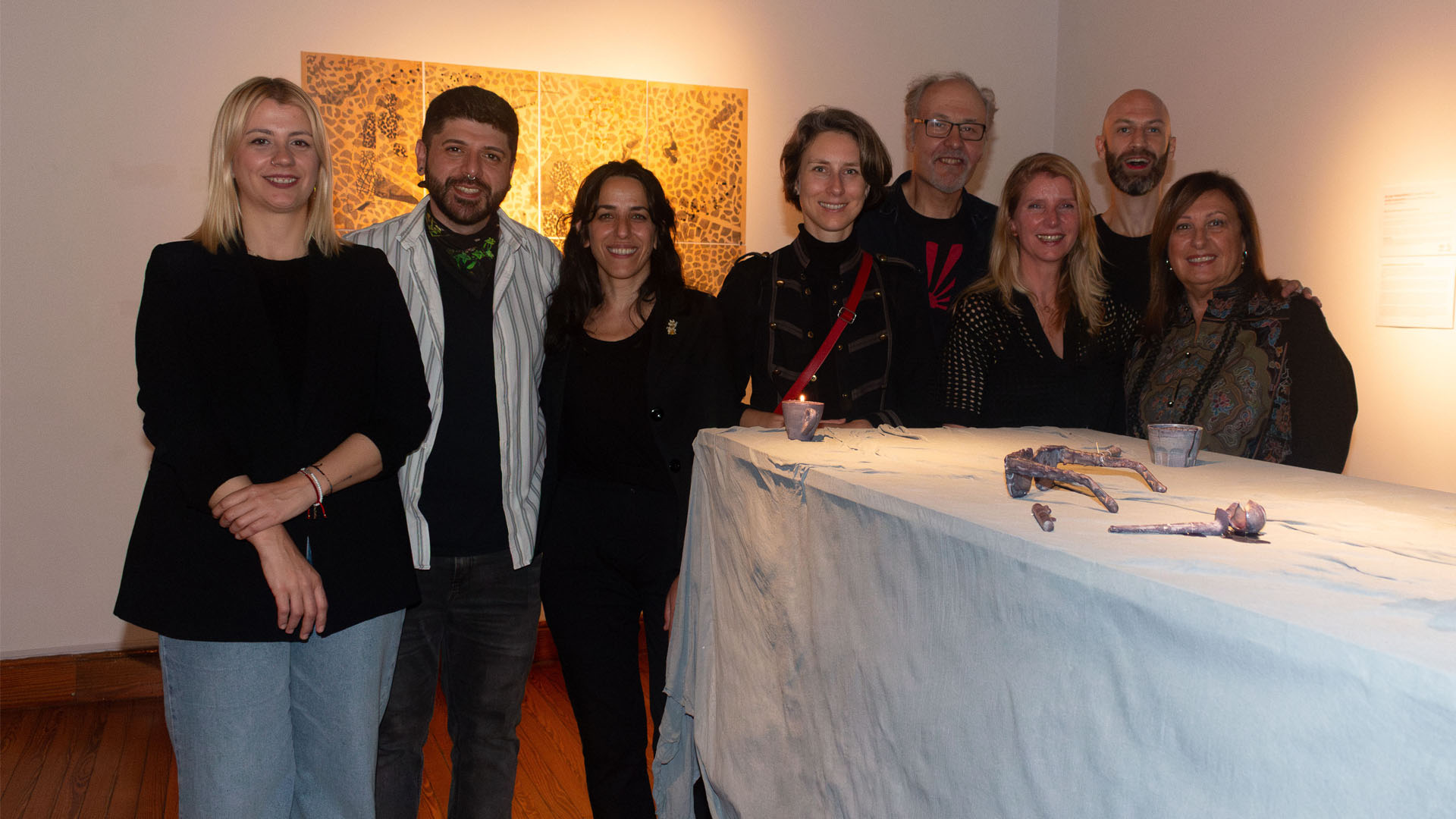
´aceNITE, Exhibitions, Open Studio
The Unseen Between Us
Artists in dialogue
14.05.25
This trio of exhibitions brings into focus that which escapes the eye but profoundly shapes our shared realities: the invisible. Whether it emerges through electromagnetic frequencies, silenced memories, or affective tensions, the unseen becomes a site of encounter, friction, and resonance.
These exhibitions explore the invisible threads—emotional, historical, or symbolic—that shape our relationships and perceptions. Through distinct yet interconnected approaches, the artists reveal what usually remains hidden: the residue of memory, the tension of distance, the silence of what is not said. Together, their works invite us to contemplate what binds us beyond the visible, in the shifting space where intimacy, absence, and transformation reside.
In the Políglota Room, Alicja Panasiewicz (a Polish artist who collaborated with Adam Panasiewicz) presented her site-specific installation My Personal Cloud, composed of a floating object-based piece, a video, and graphic works created using various techniques during her stay at ´ace.
Claudia Guixot (a Spanish artist and recipient of the 2024 Fundación´ace–Open Portfolio FIG Bilbao Award, present thanks to the collaboration with CCEBA—Centro Cultural de España en Buenos Aires) showcased the results of her exploration of light and materiality produced during her residency. Additionally, prior to the exhibition opening, Claudia led a workshop titled Migrating Images, in which the artist and PhD in Arts shared the technique she developed as part of her doctoral research.
Ana Dulce Collados (Argentina) inaugurated her intervention in the Carapantallas Project, marking the second intervention of the year. Using simple technological elements and precarious integrated circuits, Ana Dulce proposed a participatory installation in which the audience can manipulate the sound and light emitted by the carapantallas through touch.

